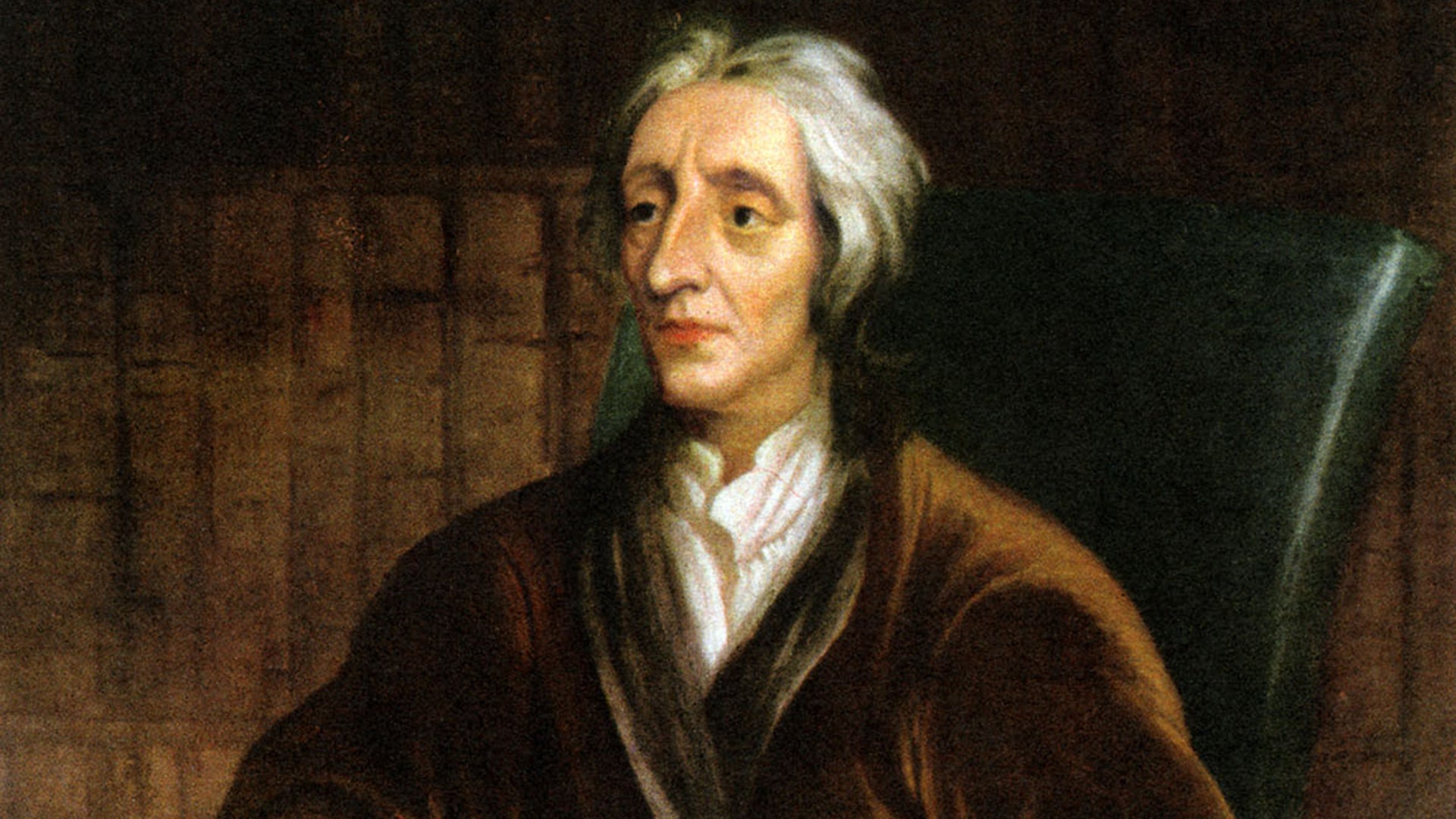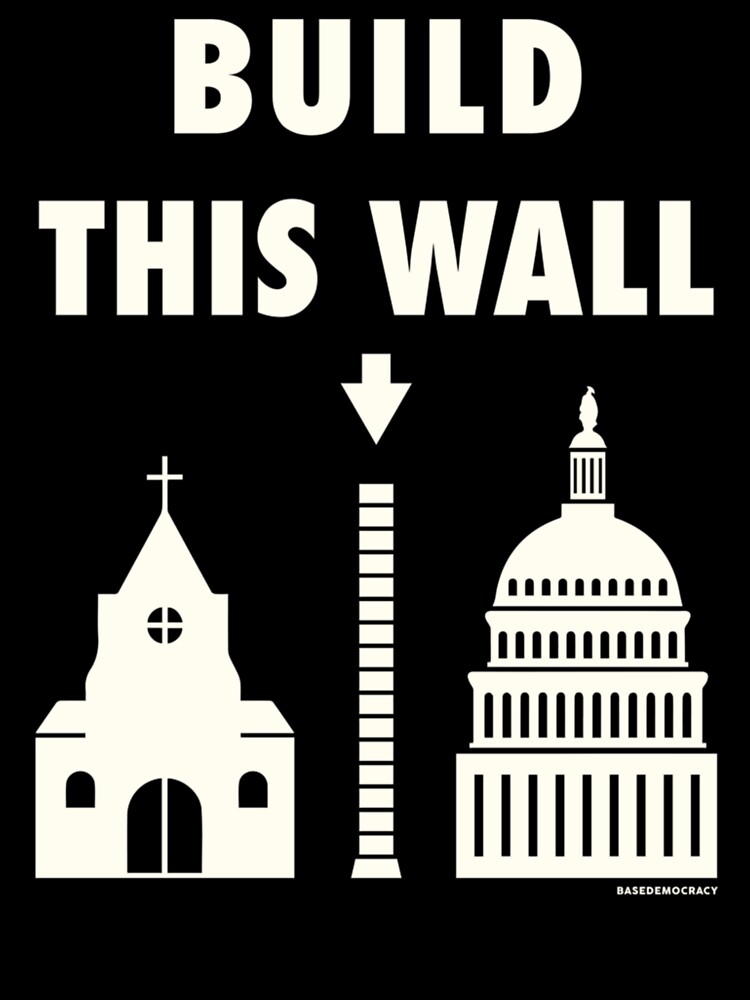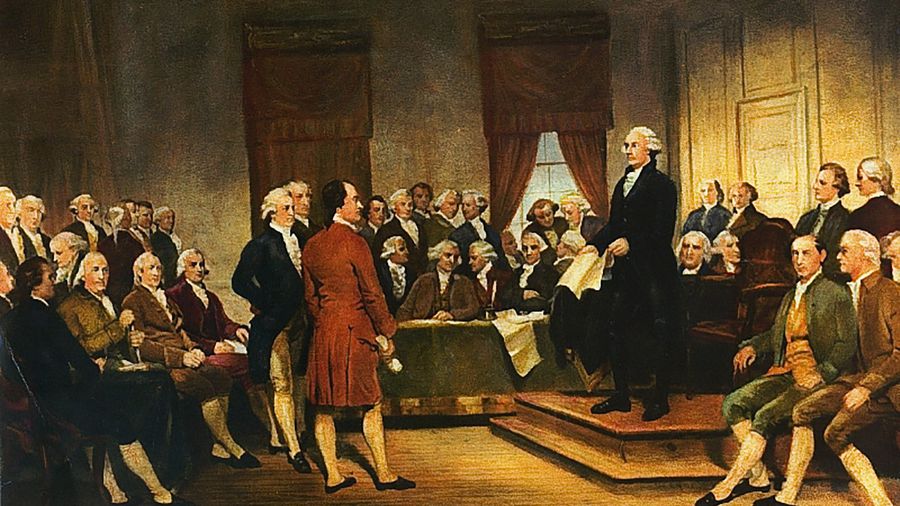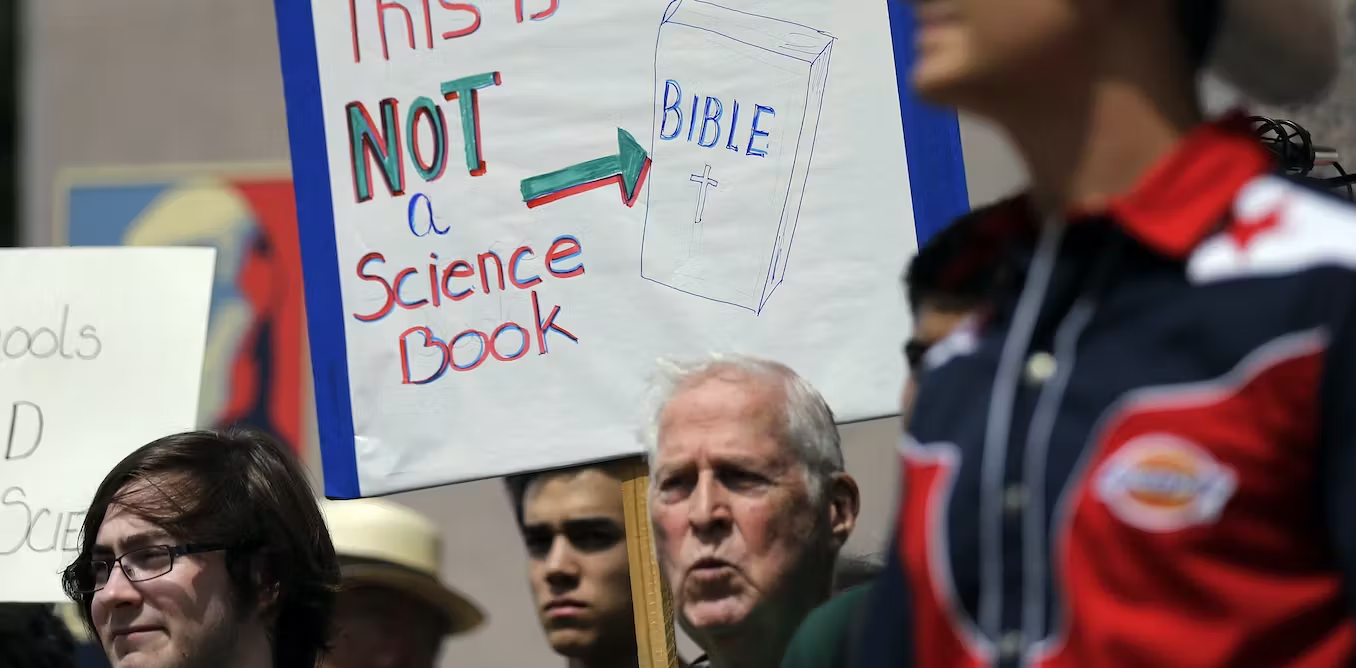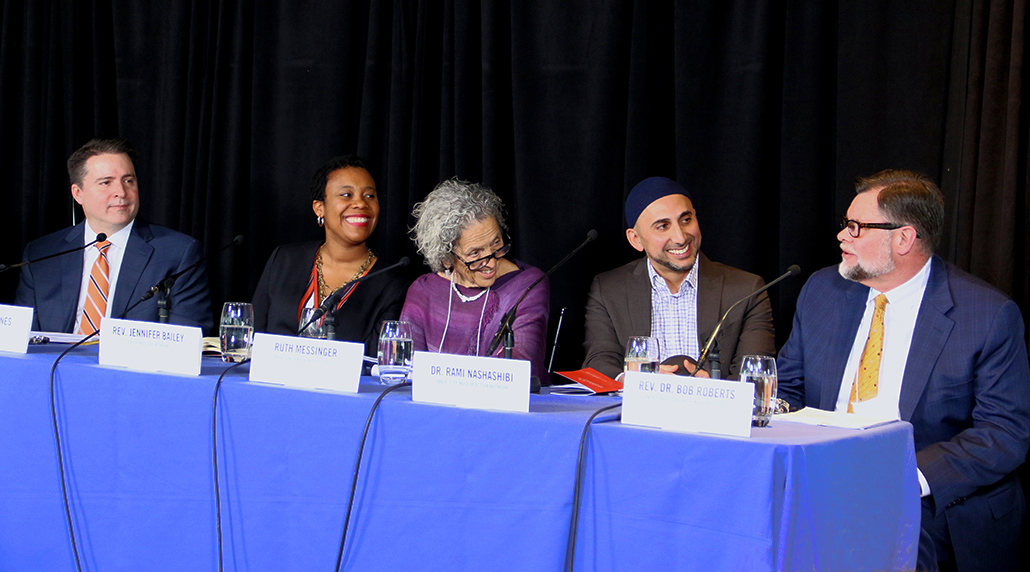The Separation Of Church And State In America - A Historical Perspective
Explore the rich historical evolution and contemporary significance of the separation of church and state in the United States. Delve into the origins rooted in the wisdom of the Founding Fathers, pivotal Supreme Court cases shaping the principle, and the ongoing challenges in balancing religious freedom and secular governance. Discover how this enduring concept preserves America's status as a beacon of religious freedom and democracy.
Bernard HorneNov 11, 202380 Shares26646 Views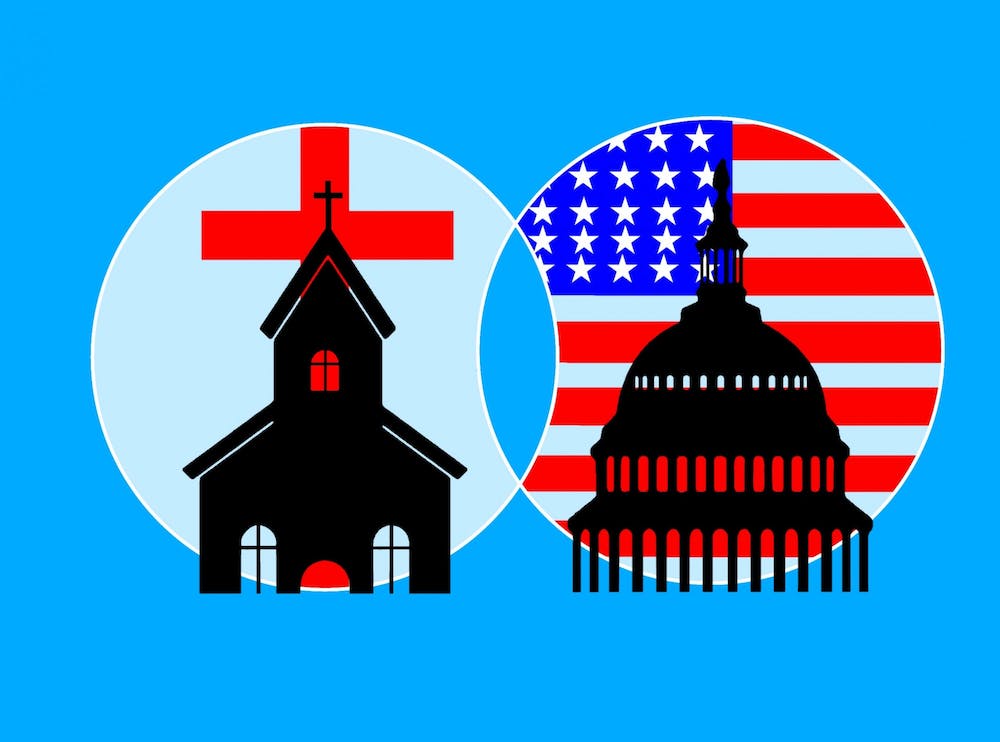

The concept of the separation of church and stateis a fundamental principle that has shaped the American nation since its inception. Rooted in the First Amendment of the U.S. Constitution, this principle has been a cornerstone of American democracy, ensuring the freedom of religion and preventing the establishment of an official state religion. In this article, we delve into the historical evolution of the separation of churchand statein America, examining key milestones, legal battles, and the enduring significance of this constitutional doctrine.
Origins Of The Separation Principle - Enlightened Ideals And The Birth Of Religious Freedom
The roots of the separation principle between religious institutions and government in America can be traced back to the very foundation of the nation. Emerging from the intellectual fervor of the Enlightenment era, this principle was deeply ingrained in the minds of the Founding Fathers, shaping the fundamental ethos of the United States.
Enlightenment Ideals And Intellectual Awakening
The Enlightenment, a period of profound intellectual awakening that swept across Europe in the 17th and 18th centuries, championed reason, individual rights, and secularism. Thinkers like John Locke and Voltaire emphasized the importance of religious tolerance and the separation of churchand state. These ideas percolated through the Atlantic, influencing the intellectual landscape of the American colonies.
Founding Fathers And Their Vision
Enlightenment ideals profoundly influenced the framers of the U.S. Constitution. The Founding Fathers, steeped in the philosophy of the Enlightenment, envisioned a nation where religious freedom would flourish. Recognizing the historical struggles in Europe due to religious persecution, they sought to establish a society where citizens could worship according to their conscience without fear of state interference or coercion.
The Pilgrims And Early Colonists
The Pilgrims, seeking religious freedom, fled England and arrived on American shores in 1620. Their quest for religious liberty set a precedent, highlighting the importance of autonomy in matters of faith. Other religious dissidents and settlers followed, establishing communities where diverse beliefs coexisted, fostering a climate of religious plurality.
The Constitutional Foundations
When crafting the Constitution and the Bill of Rights, the Founding Fathers were deliberate in their approach. The First Amendment, ratified in 1791, enshrined the principle of religious freedom, ensuring that Congress shall make no law respecting an establishment of religion or prohibiting the free exercise thereof. This succinct statement laid the groundwork for the separation of church and state, reflecting the Enlightenment values of reason, tolerance, and individual liberty.
Enduring Legacy And Global Influence
The visionof the Founding Fathers reverberates through the centuries, shaping not only the United States but also inspiring movements for religious freedom worldwide. The separation principle became a cornerstone of American democracy, fostering an environment where diverse religious beliefs could flourish, contributing to the rich tapestry of American culture and society.
Understanding The Separation Of Church And State - A Pillar Of American Freedom
The phrase "separation of church and state" may not be explicitly stated in the U.S. Constitution, but its essence is woven into the fabric of American democracy. Enshrined within the First Amendment, the principle is foundational to the nation's commitment to religious freedom and individual liberties. At its core, the separation of church and state is a principle that safeguards the rights and beliefs of every American citizen, ensuring the coexistence of diverse faiths and non-belief within the public sphere.
The Evolution Of The Establishment Clause - Defining The Separation Of Church And State
The Establishment Clause of the First Amendment, a mere forty-five words, holds immense significance in the landscape of American constitutional law. While the language itself is concise, its interpretation has been a subject of intense scrutiny, shaping the delicate balance between religious freedom and government intervention.
The Early Consensus
In the nascent years of the United States, the meaning of the Establishment Clause was clear to the Founding Fathers, albeit implicit. For nearly a century and a half, there was little contention regarding its implications. The prevailing consensus was that the government should refrain from endorsing or promoting any particular religion, fostering a climate of religious neutrality.
Challenges And Diverse Society
As America experienced waves of immigration and religious diversity, questions about the role of religion in public lifebecame more pressing. New communities brought varied beliefs and practices, leading to challenges against existing laws and practices. These challenges, rooted in the First Amendment, sparked debates that ultimately necessitated legal clarity.
The Supreme Court's Crucial Role
The responsibility of interpreting the Establishment Clause fell upon the Supreme Court of the United States. Landmark cases such as Everson v. Board of Education(1947) marked a turning point, setting a precedent for the separation of church and state. The Court's decisions, often nuanced and complex, sought to strike a balance, ensuring the protection of religious freedom while preventing the endorsement of any specific faith.
Interpretation And Implications
While the Establishment Clause does not explicitly mention the separation of church and state, it has been widely interpreted to require just that. This interpretation forms the bedrock of the principle, ensuring that the government remains neutral in matters of religion. It prohibits government-sponsored prayer in public schools, the display of religious symbols on government property, and other practices that could be construed as endorsements of a particular faith.
Contemporary Challenges And Ongoing Debate
In modern America, the interpretation of the Establishment Clause continues to be a subject of debate and legal battles.
Issues such as government funding for religious institutions, religious exemptions from laws, and the display of religious symbols in public spaces regularly test the boundaries of the clause. Courts across the country grapple with these challenges, striving to maintain the delicate equilibrium envisioned by the framers.
The Enduring Principle - Religious Freedom And Democracy
The interpretation of the Establishment Clause as requiring the separation of church and state stands as a testament to America's commitment to religious freedom and democratic values. It ensures that individuals of all faiths, or none at all, can participate fully in public lifewithout fear of discrimination or coercion. As America continues to evolve, this enduring principle remains vital, safeguarding the essence of a pluralistic society where diverse beliefs are respected, and individual liberties are upheld.
The Roots Of The ‘Separation Of Church And State’ - Early American Fears And Founding Metaphors
The metaphorical phrase ‘separation of church and state’ holds a profound place in American history, symbolizing the nation’s commitment to religious freedom and government neutrality. Its origins can be traced back to the fears of early American thinkers like Roger Williams and the turbulent times when the delicate balance between governance and religious expression was being forged.
Roger Williams And The Concept Of Ecclesiastical Independence
Roger Williams, the visionary founder of Rhode Island, played a pivotal role in shaping the early discourse around the separation of church and state. He eloquently expressed his views, advocating for an authentic Christianchurch. Williams believed that for a true Christian community to flourish, there must be a "wall or hedge of separation" between the secular world and the sacred realm of the church. He warned that any intrusion of government into religious affairs would lead to the corruption of the church’s purity and authenticity.
Thomas Jefferson And The Iconic Metaphor
The metaphor gained widespread prominence through the words of Thomas Jefferson, one of America’s most influential Founding Fathers. In his 1802 letter to the Danbury Baptist Association, Jefferson utilized the metaphor to emphasize the intent behind the Establishment Clause of the First Amendment. He asserted that the American people, by adopting the Establishment Clause, had constructed a metaphorical "wall of separation between the church and state." Jefferson’s words resonated deeply, becoming a cornerstone in the understanding of the First Amendment's religious freedom protections.
Turmoil And Experimentation In Early America
The backdrop against which these metaphors emerged was a period of significant upheaval and experimentation. American colonists grappled with the challenge of reconciling governance with religious expression. Different colonies took divergent paths – some embraced religious freedom, allowing a variety of faiths to coexist, while others staunchly supported an established church. The resulting tensions underscored the need for a clear delineation between religious practices and governmental influence.
Enduring Significance And Legacy
The ‘separation of church and state’ metaphor, rooted in the concerns and insights of early American thinkers, has become an enduring principle in American constitutional law. It symbolizes the nation's commitment to religious pluralism, ensuring that citizens are free to practice their faith without the interference of the government. Over the centuries, this metaphor has evolved into a guiding philosophy, serving as a foundation for numerous court decisions and shaping the understanding of religious freedom in the United States.
Legal Landmarks - Shaping The Boundaries Of Church And State
The evolution of the separation of church and state in the United States is intricately woven into the fabric of the country’s legal history. Landmark Supreme Court cases have played a pivotal role in defining and reinforcing the boundaries between religious activitiesand public institutions, solidifying the delicate balance between religious freedom and state interests.
Everson V. Board Of Education (1947)
In the case of Everson v. Board of Education, the Supreme Court made a groundbreaking decision. The case centered around a New Jersey law that provided reimbursements to parentswho sent their childrento school on buses operated by the public transportation system, including private and parochial schools. The Court upheld the law, establishing an important precedent by ruling that the state could provide limited financial support to religious institutions if it was part of a broader program benefiting all students, regardless of their religious affiliation. This decision underscored the principle that public funds could be allocated to religious institutions under specific circumstances without violating the Establishment Clause.
Lemon V. Kurtzman (1971)
Lemon v. Kurtzmanmarked another significant milestone in the jurisprudence of church-state relations. The case challenged laws in Pennsylvania and Rhode Island that allowed the states to subsidize salaries and other costs of teachers in parochial schools. The Supreme Court, in a landmark decision, established the Lemon Test, a three-pronged test to determine the constitutionality of laws or government actions under the Establishment Clause. According to this test, a law must have a secular legislative purpose, its primary effect must neither advance nor inhibit religion, and it must not result in excessive government entanglement with religion. This ruling provided a clear framework for evaluating the constitutionality of government involvement with religious institutions.
Edwards V. Aguillard (1987)
Edwards v. Aguillardcentered on a Louisiana law that mandated the teaching of creationism alongside evolution in public schools. The Supreme Court struck down the law, asserting that it violated the Establishment Clause by advancing a particular religious belief. This ruling reinforced the principle that public schools must maintain religious neutrality in their curriculum, ensuring that religious beliefs are not endorsed or promoted by the state.
Challenges And Controversies: Navigating The Complex Terrain
Despite these legal landmarks, challenges to the separation of church and state persist. Debates over prayer in public schools, the display of religious symbols on government property, and the teaching of evolution in classrooms continue to spark contentious legal battles. These controversies highlight the complexities of balancing religious freedom with state interests. Courts grapple with the nuanced interpretations of the Establishment Clause, attempting to strike a delicate equilibrium between accommodating religious practices and upholding the principles of a secular government.
Modern Interpretations - Navigating The Complex Terrain Of Religious Freedom And Governance
In the intricate tapestry of modern American society, the tension between religious beliefs and secular governance persists as a defining challenge. The United States, a nation founded on the principles of religious freedom, continues to grapple with the delicate task of balancing the deeply held beliefs of its citizens with the principles of nondiscrimination and equality. In contemporary times, this balance represents a nuanced and ongoing challenge, calling for discerning judgment and a keen understanding of both constitutional rights and societal progress.
Courts As Arbiters - Adjudicating The Clash Of Rights
Courts across the nation find themselves at the forefront of the struggle to reconcile the clash between religious convictions and the principles of equality. Cases involving businesses refusing services based on religious beliefs, healthcare providers declining certain medical procedures, and educational institutions facing questions about accommodating religious practices all highlight the intricate challenges of modern interpretations. Judges, in these cases, are tasked with evaluating the sincerity of religious beliefs while ensuring that the fundamental rights of all individuals, including those from marginalized communities, are protected.
The Diverse Religious Landscape
America's religious landscape is remarkably diverse, encompassing a wide array of faiths, denominations, and belief systems. This diversity adds layers of complexity to the challenge. The legal system must navigate between different religious practices and doctrines, ensuring that accommodations made for one faith do not infringe upon the rights of others. Striking a balance here requires a deep understanding of various religious traditions and their implications on public life.
Public Policy And Legislation
Policymakers, too, are faced with the task of crafting legislation that respects religious freedoms while upholding the principles of a secular society. In areas such as employment, education, and healthcare, lawmakers must strike a balance that guarantees the rights of religious individuals without allowing discrimination against others. Crafting inclusive policies that accommodate diverse beliefs without compromising the rights of any group is a challenging but essential endeavor.
Education And Dialogue
Education and dialogue play a vital role in navigating the complexities of modern interpretations. Encouraging conversations about religious freedom, tolerance, and mutual respect fosters understanding among diverse communities. By promoting awareness and acceptance of different belief systems, society can work towards a more inclusive environment where religious freedoms are protected, and mutual respect prevails.
The Ongoing Challenge
The tension between religious beliefs and secular governance is an enduring challenge that underscores the vitality of America's constitutional values. The principles of the First Amendment, including the Establishment Clause and the Free Exercise Clause, continue to guide the nation's approach. Upholding these values requires a delicate balance, one that respects the rich tapestry of religious beliefs while ensuring that no individual or group is marginalized or discriminated against.
The Timeless Relevance Of The Separation Of Church And State
The concept of the separation of church and state, rooted in the wisdom of the framers, continues to shine brightly in the diverse tapestry of American society. Their foresight in establishing this principle has cultivated a nation where individuals have the freedom to practice their religion or choose not to, all according to their conscience. This enduring principle acts as a cornerstone, preserving America's status as a beacon of religious freedom and a paradigm for democratic nations worldwide.
For contemporary perspectives on the separation of church and state, particularly within President Joe Biden's administration, readers can delve deeper into this topic at the Washington Independent.
Separation Of Church - FAQs
Is Church And State Separate In The USA?
The United States practices the separation of church and state. This principle, derived from the First Amendment of the U.S. Constitution, prohibits the government from establishing an official religion and guarantees individuals' freedom to practice their religion without government interference.
When Did America Separate Church And State?
The concept of the separation of church and state has been a fundamental principle in the United States since the ratification of the First Amendment in 1791. While the specific phrase "separation of church and state" does not appear in the Constitution, the principles behind it have been interpreted by the courts and have become a fundamental aspect of American constitutional law.
When Did The Church Start In America?
Christianity, the predominant religion in early America, was brought to the continent by European settlers. The first Christian denomination to establish a presence in what is now the United States was the Anglican Church, which arrived with the English settlers in Jamestown, Virginia, in the early 17th century. Subsequently, various other Christian denominations, such as Puritans in New England and Quakers in Pennsylvania, established churches as well. Over the centuries, America has become religiously diverse, with various denominations and non-Christian religions practiced throughout the country.
Conclusion
The separation of church and state in America is not just a legal doctrine; it is a guiding philosophy that has shaped the nation's identity. From the Founding Fathers to the modern era, this principle has been the bedrock upon which the country's religious and civic freedoms stand. As America continues to evolve, the enduring legacy of the separation of church and state serves as a reminder of the nation's commitment to liberty, justice, and the pursuit of a more perfect union.
Jump to
Origins Of The Separation Principle - Enlightened Ideals And The Birth Of Religious Freedom
Understanding The Separation Of Church And State - A Pillar Of American Freedom
The Evolution Of The Establishment Clause - Defining The Separation Of Church And State
The Roots Of The ‘Separation Of Church And State’ - Early American Fears And Founding Metaphors
Legal Landmarks - Shaping The Boundaries Of Church And State
Modern Interpretations - Navigating The Complex Terrain Of Religious Freedom And Governance
The Timeless Relevance Of The Separation Of Church And State
Separation Of Church - FAQs
Conclusion
Latest Articles
Popular Articles
